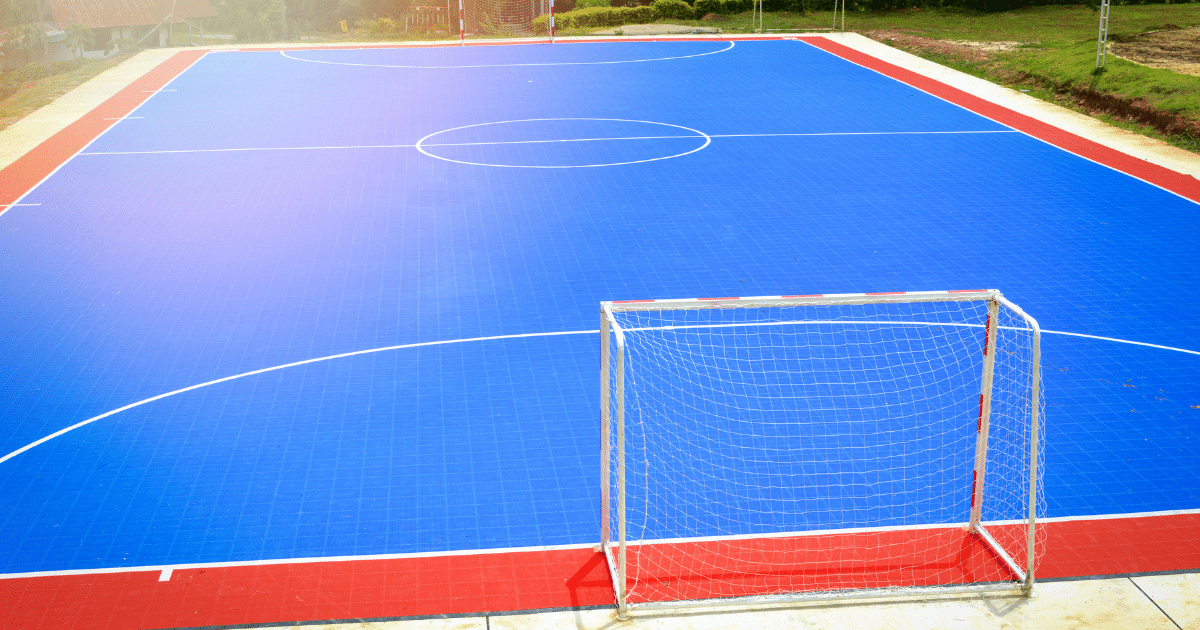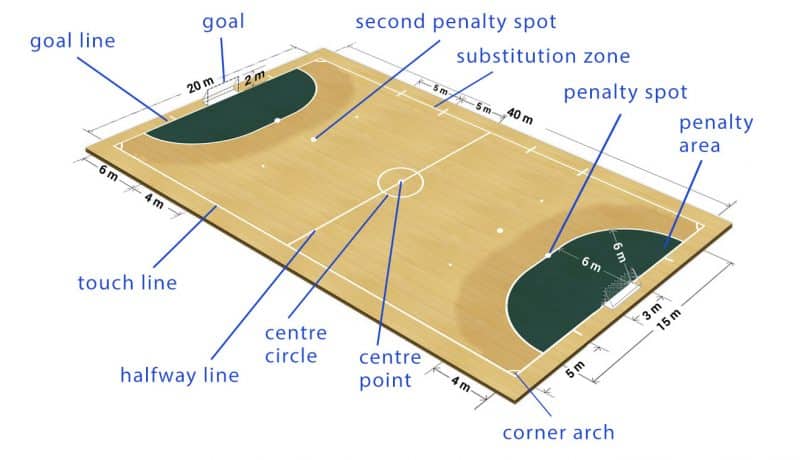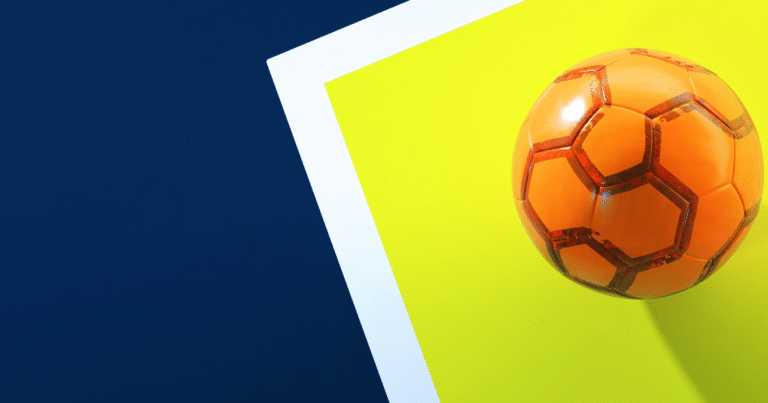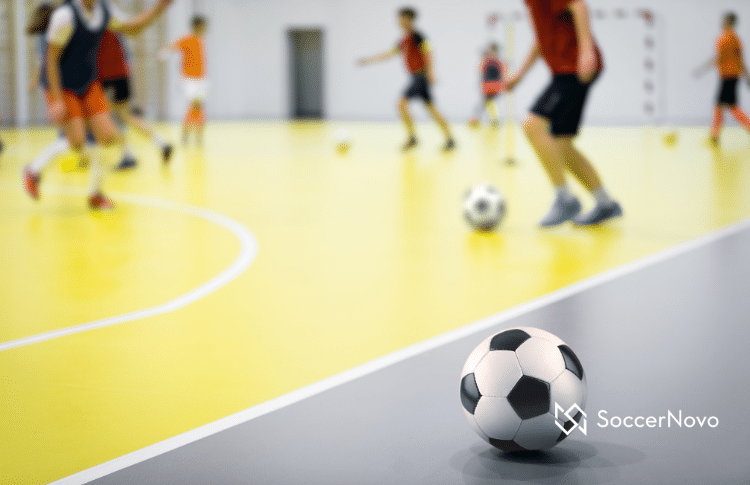The Blueprint to Futsal Court Dimensions
Futsal, the fast-paced indoor variant of soccer, requires specific court dimensions and markings to ensure proper gameplay.
This guide covers all essential aspects of futsal court specifications, from basic measurements to detailed marking requirements.
Standard Court Dimensions
- Minimum length: 25 meters (82 feet)
- Maximum length: 42 meters (138 feet)
- Minimum width: 16 meters (52 feet)
- Maximum width: 25 meters (82 feet)
Average/recommended size: 40 meters × 20 meters (131 feet × 65 feet)
Court Shape and Surface Requirements

The court must be rectangular, with the touchline length always greater than the goal line length. The playing surface should be flat, smooth, and non-abrasive. Common surface materials include:
- Synthetic/rubber materials (ideal)
- Wooden flooring
- Sport court tiles
- Polished concrete
Important Court Markings

Center Court
- A center circle with a 3-meter radius
- A clearly marked center spot
- A halfway line dividing the court into equal halves
Goal Area (Goalkeeper’s Box)
- Dimensions: 5 meters wide × 2 meters deep
- Reserved exclusively for goalkeeper use
- Marked with clear, visible lines
Penalty Area
- Dimensions: 15 meters wide × 6 meters deep
- Extends 6 meters from the goal line
- Includes penalty spot 6 meters from goal line
Additional Marking Requirements
- Substitution zones: 5 meters long, located on the touchline
- Corner arcs: 25cm radius in each corner
- All lines: 8cm wide (consistent throughout)
- Second penalty mark: 10 meters from goal line
Goal Specifications
- Height: 2 meters (6.5 feet)
- Width: 3 meters (9.8 feet)
- Material: Aluminum or similar approved material
- Safety requirements: Must be anchored securely
Regional Adaptations
While international standards exist, some adaptations are common:
- North American facilities often convert basketball courts for futsal use
- School gymnasiums may use existing court lines with temporary futsal markings
- Recreational leagues might use modified dimensions based on available space
Basketball Courts Aren’t the Same as Futsal Courts
In many futsal tournaments here in the northeast, they use basketball courts. While not ideal, it’s a decent alternative. Here are several important differences to consider:
- Size Discrepancy: A standard NBA basketball court measures 94 feet × 50 feet (28.65m × 15.24m), which falls short of optimal futsal dimensions. This smaller size can impact game dynamics and strategy.
- Different Line Markings: Basketball courts have distinct line markings for three-point shots, free throws, and the key area that aren’t relevant to futsal. This can create visual confusion for players and officials.
- Court Surface: Basketball courts typically use hardwood flooring optimized for basketball-specific movements. While suitable for futsal, this surface may affect ball bounce and player movement differently than purpose-built futsal courts.
- Goal Placement: Basketball courts require temporary goal setups, which may not align perfectly with standard futsal positioning and can create safety considerations regarding proper anchoring.
- Space Constraints: The placement of basketball backboards and hoops can interfere with the ideal clearance space needed for futsal, particularly in the corners and behind the goals.
Conclusion
Understanding and implementing correct futsal court dimensions and specifications is important for fair play and player safety.
While the official measurements provide a standard framework, the reality is most of the sizes are different in the U.S.
Whether building a new facility or converting an existing space, following these guidelines ensures an optimal playing environment.
The key to a successful futsal court lies not just in meeting minimum requirements, but in creating a space that promotes the quick, technical style of play that makes futsal unique.
When properly designed and marked, a futsal court becomes an ideal venue for developing skills that translate well to both indoor and outdoor soccer.
The court size can vary depending on the level of play, but it is important to have a court that meets the minimum requirements to play the game like it’s supposed to.

Written By: SoccerNovo
SoccerNovo is an independent youth soccer media brand built to help parents, players, and coaches better understand the game and the pathways available in U.S. soccer. Our mission is to make youth soccer simpler, clearer, and more accessible for everyone involved in it.
Let’s connect






